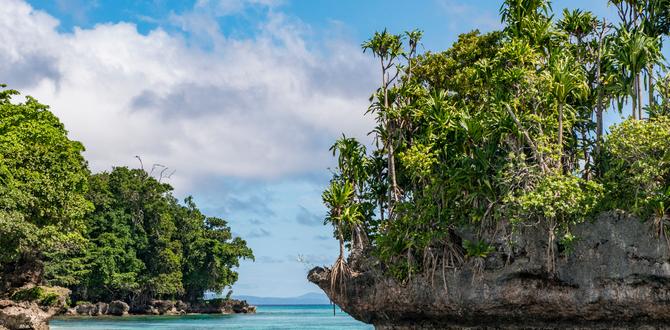Baja California Food Neighborhoods Explained: Essential Guide
Discover the diverse culinary landscapes of Baja California by understanding its distinct food neighborhoods. This guide breaks down the unique flavors and specialties found in different regions, from taco alleyways to fresh seafood havens, making your gastronomic journey simple and delicious.
Baja California is a food lover’s paradise, a long, thin peninsula bursting with incredible flavors. Thinking about where to eat can feel a bit overwhelming with so many amazing options. But what if there was a simple way to navigate this culinary map? We’ve got you covered. This guide will help you understand the different “food neighborhoods” within Baja California, so you can easily find exactly the kind of deliciousness you’re craving, whether it’s your first time visiting or you’re a seasoned traveler. Get ready to discover where to find the best bites!
Understanding Baja’s Culinary Geography
Baja California’s food scene isn’t just about individual restaurants; it’s deeply tied to its geography and local culture. Think of “food neighborhoods” as areas that have developed a reputation for specific types of cuisine or dining experiences. This often comes from proximity to fresh ingredients, historical immigration patterns, or the growth of certain industries. Understanding this can transform your trip from just eating to a true culinary adventure.
The Influence of Geography on Flavor
Baja California stretches from its northern border with the United States down to the very tip of the peninsula. This vastness means diverse climates and access to different resources.
Coastal Regions: Naturally, you’ll find an abundance of fresh seafood here. Think pristine beaches, bustling fishing towns, and restaurants serving the catch of the day.
Inland Valleys: Areas like the Guadalupe Valley are agricultural powerhouses, renowned for wineries and fresh produce that influences farm-to-table dining.
Border Towns: Cities like Tijuana, being on the doorstep of the US, often have a dynamic fusion of flavors, innovative culinary trends, and accessible eateries.
The Role of Culture and History
Migration and local traditions have significantly shaped Baja’s food neighborhoods.
Mexican Culinary Heritage: The foundation is, of course, traditional Mexican cuisine, with regional variations of tacos, enchiladas, and stews.
Asian Influences: In areas like Ensenada, Japanese immigrants have had a profound impact, particularly on seafood preparations and the birth of the legendary Baja-style fish taco.
American Influence: The proximity to the US has also led to certain culinary adaptations and the popularity of comfort foods alongside local specialties.
Key Baja California Food Neighborhoods Explained
Let’s dive into the specific types of food environments you’ll encounter as you explore Baja California. These aren’t always strict geographic boundaries, but rather clusters of culinary experiences that define a region’s food identity.
1. The “Taco Alley” (Taco Heaven)
This is arguably the most famous “food neighborhood” in Baja, especially in cities like Tijuana and Ensenada. It’s not a single street, but rather a concentration of taco stands and small eateries, each with its own specialty.
What to Expect:
Abundance of Options: You’ll find dozens, sometimes hundreds, of taco shops in close proximity.
Specialization: Many shops focus on one or two types of tacos, perfecting their craft.
Baja-Style Fish Tacos: This is the birthplace of the iconic crispy, battered fish taco, served with shredded cabbage, crema, and a variety of salsas. Don’t miss the shrimp tacos either!
Carne Asada: Perfectly grilled marinated beef is a staple, often served with fresh guacamole and pico de gallo.
Late-Night Eats: “Taco Alleys” are often vibrant and bustling late into the night, perfect for post-adventure or evening meals.
Experience Tip: Don’t be afraid to try multiple places! Each stand offers a unique take. Look for places with lines – that’s usually a good sign of quality and popularity.
2. The Coastal Seafood Havens
Along the Pacific coast and the Sea of Cortez, you’ll find towns where seafood reigns supreme. Ensenada, Puerto Nuevo, and La Paz are prime examples.
What to Expect:
Ultra-Fresh Catch: Fish and shellfish are often caught that very morning.
Lobster Villages (Puerto Nuevo): Puerto Nuevo is legendary for its “Lobster Festival” where you can enjoy simple, delicious lobster dinners served with beans, rice, and tortillas.
Ceviche and Aguachile: Don’t miss these zesty, raw seafood preparations, marinated in citrus and spices. Aguachile, a spicier cousin of ceviche, is a must-try.
Seafood Tostadas: Crispy tortillas piled high with freshly prepared seafood are a common and delightful treat.
Variety: From humble beachfront shacks to more upscale restaurants, the focus is always on celebrating the ocean’s bounty.
Experience Tip: Ask for the “catch of the day” to ensure you’re getting the freshest options. Many restaurants will even let you choose your fish.
3. The Wine Country Eateries (Valle de Guadalupe)
Baja California’s burgeoning wine scene in the Guadalupe Valley has led to a sophisticated culinary landscape. This is where farm-fresh ingredients meet world-class wines.
What to Expect:
Farm-to-Table Dining: Restaurants here are deeply connected to the local vineyards and agricultural producers.
Gourmet Experiences: Expect beautifully plated dishes, innovative menus, and a focus on high-quality ingredients.
Wine Pairings: Many restaurants offer curated wine pairings with their meals, showcasing the best local varietals.
Artisan Products: Alongside wine, you’ll find local olive oils, cheeses, and artisanal bread.
Scenic Ambiance: Dining often takes place amidst vineyards, offering stunning views and a relaxed, upscale atmosphere.
Experience Tip: Reservations are often recommended, especially for popular vineyards and restaurants during peak season. Plan for a leisurely meal to fully enjoy the experience.
4. The Border Town Fusion Spots (Tijuana)
Tijuana is a vibrant, modern city at the forefront of culinary innovation. Its proximity to the US means it’s a melting pot of influences, leading to exciting new food trends.
What to Expect:
Culinary Innovation: Tijuana is known for pushing boundaries, from modern takes on traditional dishes to entirely new creations.
Gourmet Street Food: Elevated street food experiences, often with unique ingredients and presentations.
Craft Beer Scene: A thriving craft beer culture often pairs perfectly with flavorful food.
International Flavors: You’ll find excellent examples of Italian, Asian, and other international cuisines, often with a Baja twist.
Food Truck Culture: A dynamic food truck scene offers diverse and accessible options.
Experience Tip: Explore the “Revolución Avenue” area for a mix of traditional and modern eateries, and don’t hesitate to venture into other neighborhoods to discover hidden gems.
5. The Desert Oasis Stops
As you venture further south into the more arid regions, the food scene can change, but it’s no less fascinating. These areas often highlight resilient local ingredients and traditional cooking methods.
What to Expect:
Hearty, Traditional Fare: Expect dishes that are filling and made with staple ingredients, often slow-cooked.
Unique Local Products: Look for local dates, chilies, and indigenous ingredients that thrive in the desert climate.
Simplicity and Authenticity: Food here is often about honest, straightforward flavors and time-tested recipes.
Roadside Stands: Simple roadside stands might offer regional specialties like machaca (dried, shredded beef) dishes or handmade tortillas.
Experience Tip: Be open to simple, authentic experiences. These stops offer a glimpse into the enduring culinary traditions of Baja’s less-explored areas.
Baja Culinary Neighborhoods: A Glance
To help you visualize, here’s a quick reference table outlining some key characteristics of these food neighborhoods.
| Food Neighborhood | Primary Offerings | Key Ingredients | Vibe/Atmosphere | Example Locations |
| :————————- | :—————————————————- | :——————————– | :——————————– | :———————————————— |
| Taco Alley (Taco Heaven) | Fish tacos, shrimp tacos, carne asada, al pastor | Fresh fish, beef, pork, corn | Casual, bustling, vibrant, late-night | Tijuana, Ensenada |
| Coastal Seafood Havens | Fresh fish, ceviche, aguachile, lobster, seafood tostadas | Seafood, citrus, chilies, tomatoes | Relaxed, scenic, fresh, oceanfront | Ensenada, Puerto Nuevo, La Paz, Los Cabos |
| Wine Country Eateries | Farm-to-table cuisine, gourmet dishes, artisan products | Local produce, meats, cheeses, wine | Upscale, scenic, relaxed, culinary | Valle de Guadalupe, Ensenada |
| Border Town Fusion | Innovative dishes, gourmet street food, craft beer pairings | Diverse, global, local fusion | Trendy, innovative, dynamic | Tijuana |
| Desert Oasis Stops | Traditional stews, dried meats (machaca), hearty plates | Local chilies, dates, resilient produce | Simple, authentic, traditional | Inland towns, smaller roadside stops (e.g., Vizcaíno) |
Planning Your Baja Food Adventure
Now that you understand the different food neighborhoods, how do you make the most of your culinary explorations? It’s all about being prepared and open to discovery.
Tips for Navigating Baja’s Food Scene:
1. Embrace the Local: Don’t be afraid to try local recommendations. Ask your hotel staff, tour guides, or even friendly locals for their favorite spots.
2. Start Small: Begin with a small order at a taco stand to test the waters. If you love it, you can always go back for more!
3. Hydration is Key: Especially when exploring street food or out in warmer climates, stay hydrated. Carrying a reusable water bottle is always a good idea. The Centers for Disease Control and Prevention (CDC) offers travel health recommendations for Mexico, including advice on staying healthy.
4. Salsa Savvy: Be adventurous with salsas, but start with milder ones if you’re sensitive to spice. Many stands offer a full salsa bar.
5. Cash is King: Many smaller eateries and street vendors prefer or only accept cash. It’s good to have small denominations on hand.
6. Look for Crowds: A busy establishment, especially one filled with locals, is usually a sign of good food and great value.
7. Consider Restroom Facilities: When choosing very basic street food spots, be mindful of restroom availability. For longer journeys or if you have specific comfort needs, having items like adult diapers or protective underwear on hand can provide an added layer of confidence and security, allowing you to focus on enjoying your food adventure without worry. This is a practical tip for ensuring comfort during travel, especially for families or individuals with specific needs.
What to Pack for a Food-Focused Trip:
While your main luggage will cover clothing and essentials, think about these specific items for your culinary journeys:
Comfortable Walking Shoes: You’ll be doing a lot of exploring on foot!
Lightweight, Breathable Clothing: Baja can be warm, especially near the coast.
Sun Protection: Hat, sunglasses, and sunscreen are essential.
Small Backpack or Day Bag: To carry water, snacks, cash, and any small purchases.
Hand Sanitizer: Always useful when trying street food.
Reusable Water Bottle: Stay hydrated and reduce plastic waste.
* For Families: If traveling with children, consider bringing along child diapers for easy changes on the go, ensuring comfort for little ones during your explorations.
Frequently Asked Questions (FAQ)
Here are some common questions beginner travelers have about Baja California’s food neighborhoods.
Q1: What is the most famous Baja California food neighborhood?
A1: The “Taco Alley” is the most iconic. This refers to areas, particularly in Tijuana and Ensenada, densely packed with taco stands and small restaurants, famous for pioneering the Baja-style fish taco and offering a vast array of other delicious taco options.
Q2: Where can I find the freshest seafood in Baja California?
A2: Coastal towns are your best bet. Look for “heavens” like Ensenada, Puerto Nuevo (famous for lobster), and La Paz. Restaurants lining the coast, especially those near fishing ports, will offer the freshest catch of the day.
Q3: Is it safe to eat street food in Baja California?
A3: Generally, yes, but with common sense. Look for busy stalls with high turnover, clean preparation areas, and freshly cooked food. Avoid anything that looks like it’s been sitting out for a long time. Washing hands or using hand sanitizer before eating is a good practice.
Q4: What is the difference between ceviche and aguachile?
A4: Both involve raw seafood cured in citrus. Ceviche typically uses lime juice and often includes tomatoes, onions, and cilantro. Aguachile is typically spicier, marinated in lime juice with chilies (like serrano or jalapeño) and often cilantro, originating from the Sinaloa region but very popular in Baja.
Q5: Should I tip at restaurants in Baja California?
A5: Yes, tipping is customary. A standard tip is around 10-15% of the bill for good service at sit-down restaurants. For very casual places or street food, a small tip or rounding up the bill is appreciated.
Q6: Are there good vegetarian options in Baja California?
A6: While seafood and meat are prevalent, you can find vegetarian options. Many taco places offer vegetable tacos, and you can often ask for modifications like bean or cheese tacos. Restaurants in wine country or larger cities are more likely to have dedicated vegetarian dishes.
Q7: How do I handle the potential need for adult diapers while traveling in Baja?
A7: Many travelers, including adults and parents of children, find that having discreet, comfortable adult protective underwear or diapers provides peace of mind. Pack an adequate supply or research if they are available for purchase locally. This ensures comfort and confidence, allowing you to fully enjoy your experiences without concern, whether it’s on a long excursion or during a busy day of exploring food markets.
Conclusion
Exploring Baja California through its food neighborhoods is an exciting and rewarding experience. From the legendary taco stands of Tijuana and Ensenada to the refined vineyards of Valle de Guadalupe and the fresh seafood locales dotting the coast, each area offers a unique flavor profile and culinary adventure.
By understanding these distinct food environments, you can plan your meals with confidence, knowing exactly where to find that perfect fish taco, exquisite wine-pairing dinner, or fresh ceviche. Remember to stay curious, try local recommendations, and embrace the vibrant, diverse tastes that Baja California has to offer. Whether you’re a seasoned foodie or a beginner just starting to explore, this guide provides the essential knowledge to make your culinary journey through Baja, safe, delicious, and unforgettable. So pack your bags, bring your appetite, and get ready to savor every bite!







